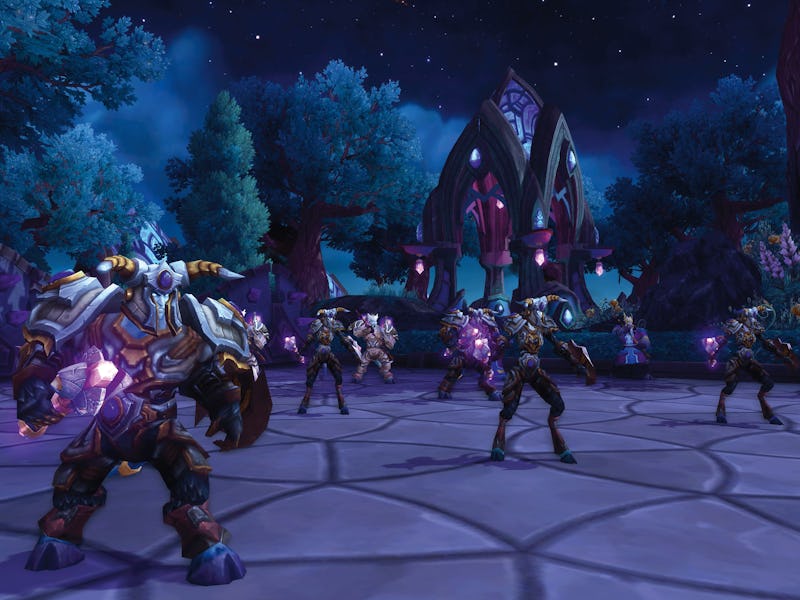Can 'World of Warcraft' Simulate a Pandemic (on Purpose)?
Ten years ago, a disease wrecked 'World of Warcraft.'

Video games have gotten big, populous, and diverse. Gaming is no longer the domain of suburban white males: At least 48% of women play on consoles and mobile. While your mom may not be playing Dota 2, gaming’s growing audience has made in-game research a viable field. That’s why researchers are trying to track a World of Warcraft outbreak.
Researcher Atif Kukaswadia has proposed that the 2005 “Corrupted Blood” incident in Blizzard’s World of Warcraft accurately (or interestingly) simulated the behavior of people during a viral outbreak.
In 2005, Blizzard issued an update in the game that allowed higher-level players (read: stronger) to participate in a raid called Zul’Gurub. In it, players would combat a winged beast that possessed a debuff (a “spell,” if you will) which resulted in a player avatar’s health draining involuntarily. It was supposed to make the challenge of fighting that thing harder, but soon players found that the spell didn’t wear off. They stayed “infected,” and the spell quickly spread to other players around the game, killing weaker, lower-level players. Soon Blizzard had enforced quarantines and social chaos erupted. Major points of traffic like city centers were abandoned as virtual bodies laid in the streets. The virus was finally eradicated a week later when Blizzard bravely reset the game’s servers.
Why does this make for such an interesting viral case? “[T]he human factor and an element of randomness,” says Kukaswadia. He says it “improves our model” and that “we can also use it to model experiments that would be otherwise unethical.”
But there are limitations. First, these are games, meant for entertainment, so good luck intentionally injecting a game like World of Warcraft with a flaw when players just want to relax with their $15/month subscription. Second, the risk of death is diminished when respawn is possible, which means that behaviors may be substantively different. Players need “to feel not as if they are in a deliberate epidemiological simulation… but rather that they are immersed in a coherent, logical setting where death is a major risk” which, if successful, can unify “epidemiological experimentation with game design and development,” says researchers Eric T. Lofgren and Nina Hefferman in a 2007 case study. That happened by accident, but it’s unclear whether it could happen on purpose.
It has been ten years since the “Corrupted Blood” incident (and about seven since Blizzard purposefully implemented the virus again in celebration of Halloween and a new expansion — that time with a zombies spin). While game subscriptions (approximately 12 million at the peak) for World of Warcraft have dwindled, WoW currently boasts a comfortable seven-million-strong active player base that represent a much larger and more diverse group than the gamers affected by “Corrupted Blood.”
Perhaps an entirely new game is the solution. One that functions like World of Warcraft, complete with its own mythology and story totally irrelevant to a viral outbreak. Just copy Star Wars or something. Then, when they least suspect it, bam, an outbreak! Get the clipboards out and take notes.